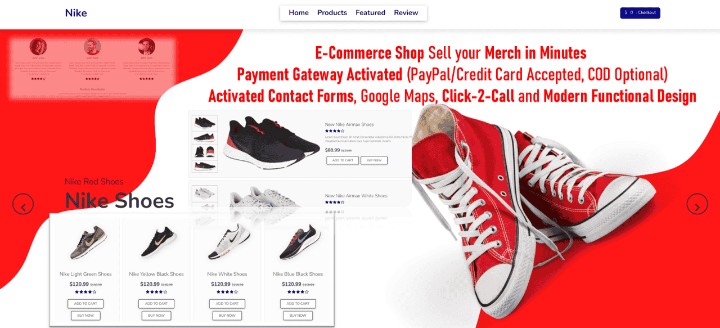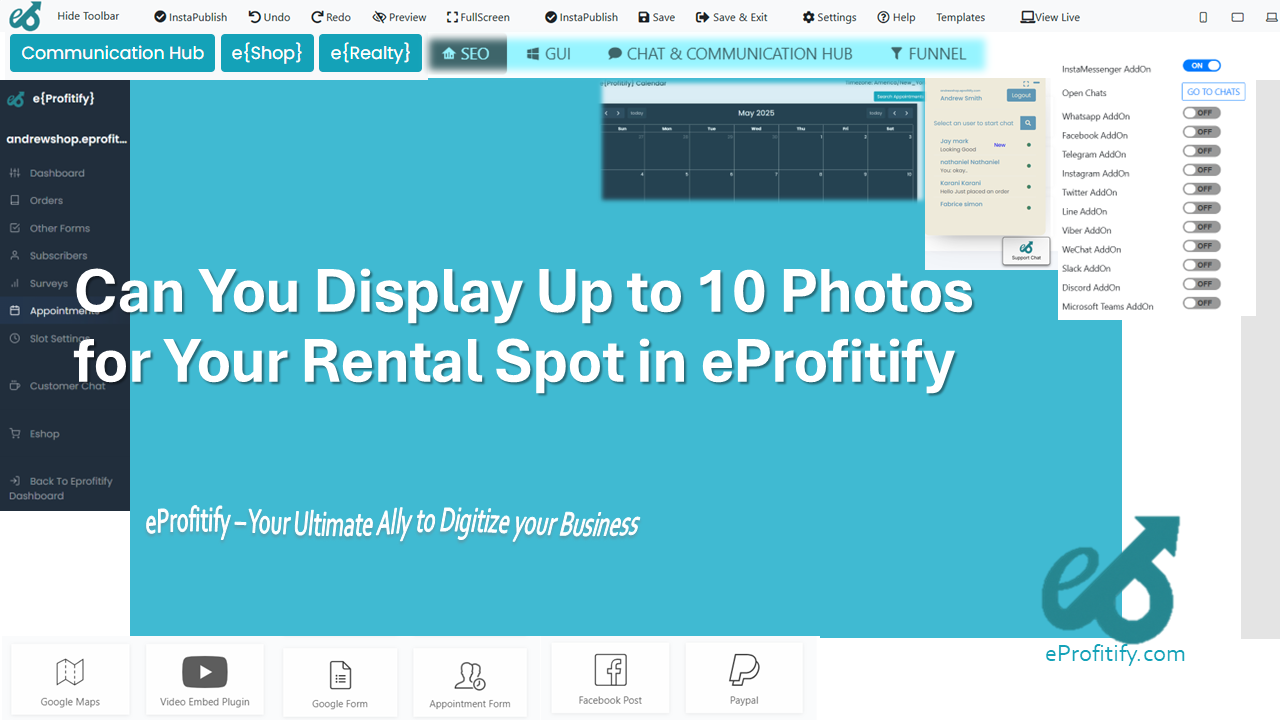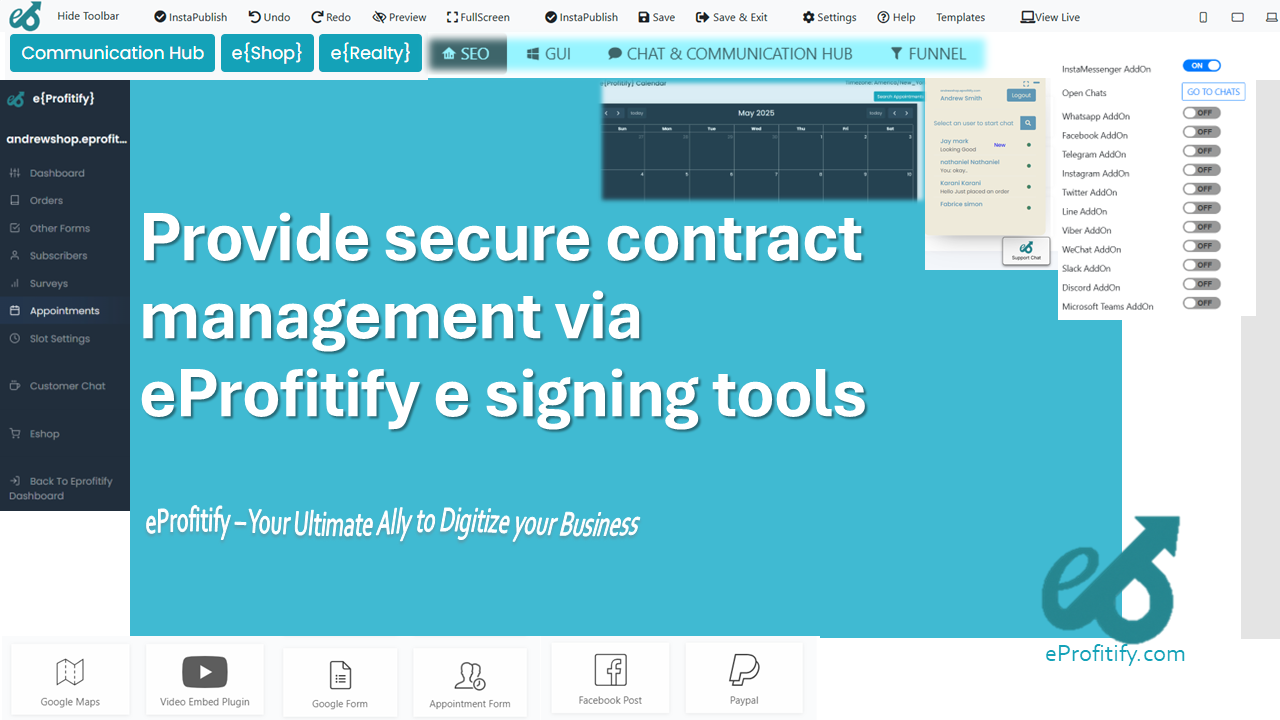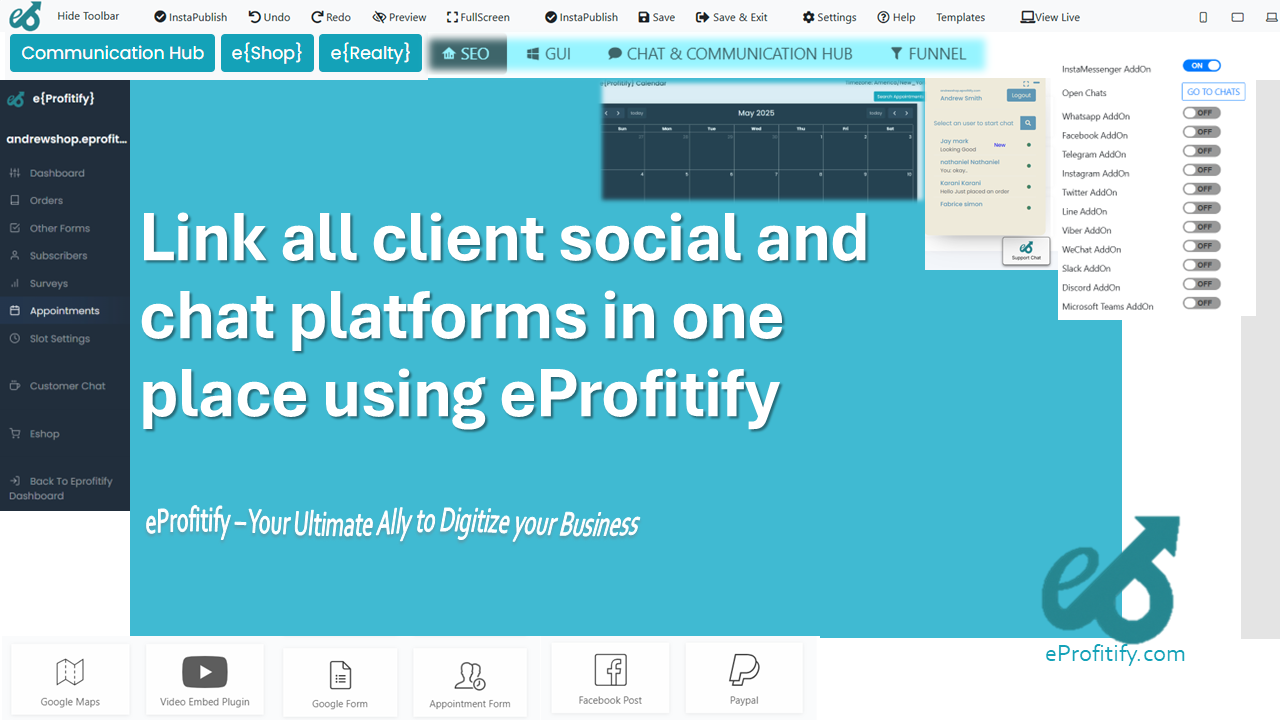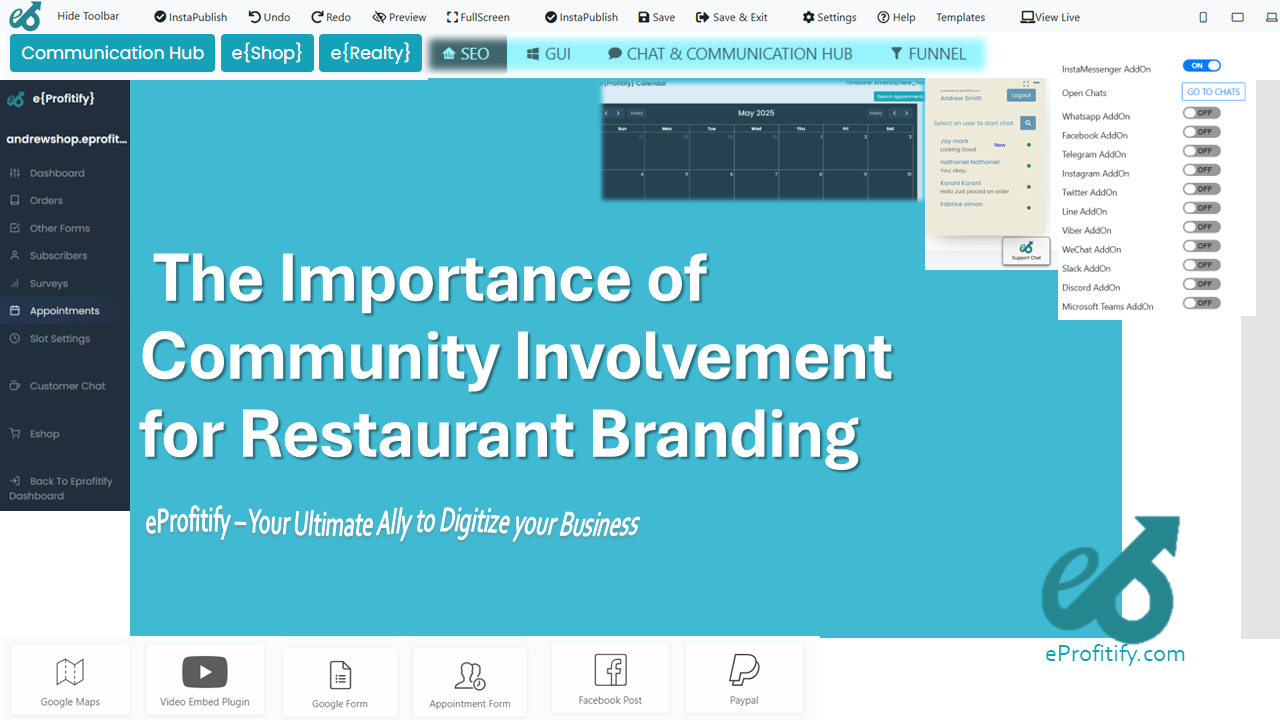Tracking SEO ROI How to Measure Success
Schedule a LIVE Zoom call with an eProfitify Expert.
Tracking SEO ROI: How to Measure Success
Search Engine Optimization (SEO) is a cornerstone of digital marketing, driving organic traffic, enhancing brand visibility, and improving conversion rates. However, investing in SEO without understanding its return on investment (ROI) can lead to misallocated resources and missed opportunities. Tracking SEO ROI involves measuring how effectively your efforts contribute to business goals, from lead generation to revenue growth. Here’s a comprehensive guide to evaluating SEO success, supported by statistics and insights into tools like eProfitify, a leading website management platform that streamlines ROI measurement.
Understanding SEO ROI
SEO ROI quantifies the value generated from SEO activities relative to their cost. Calculating ROI requires tracking key metrics such as keyword rankings, traffic, conversions, and revenue, then comparing these gains to expenses like content creation, tools, and agency fees. According to BrightEdge, 53% of all website traffic comes from organic search, underscoring SEO’s critical role in driving sustainable growth.
Key Metrics to Track SEO Success
1. Keyword Rankings
Ranking for high-intent keywords directly impacts visibility. Pages in the top 5 search results capture 67% of all clicks (Ahrefs), making keyword tracking essential. Tools like SEMrush and Google Search Console help monitor rankings, but integrating these insights with business outcomes requires deeper analysis.
2. Organic Traffic Growth
Organic traffic growth reflects SEO effectiveness. A HubSpot study found that businesses prioritizing SEO are 13x more likely to see positive ROI. However, traffic alone isn’t enough—quality matters. For instance, eProfitify’s analytics dashboard helps segment traffic sources, identifying which pages attract high-value visitors.
3. Conversion Rates
Conversions—whether form submissions, sign-ups, or sales—tie SEO to business outcomes. Companies with optimized SEO strategies see conversion rates 2-3x higher than non-optimized competitors (HubSpot). eProfitify’s CRM integrates with SEO data, linking keyword performance to lead nurturing and sales pipelines.
4. Revenue Attribution
Attributing revenue to SEO involves tracking user journeys. Salesforce reports that 52% of revenue is influenced by multi-touch attribution, including organic search. Advanced platforms like eProfitify unify ecommerce and CRM data, enabling precise revenue tracking from first click to final purchase.
5. Customer Lifetime Value (CLV)
SEO often attracts loyal customers. Increasing customer retention by 5% can boost profits by 25-95% (Bain & Company). By analyzing CLV through eProfitify’s CRM, businesses gauge long-term SEO value beyond initial conversions.
6. Cost Analysis
Calculate total SEO costs, including content, tools, and labor. ROI = [(Revenue from SEO – Cost) / Cost] x 100. For example, if SEO generates $50,000 annually at a $10,000 cost, ROI is 400%.
Challenges in Measuring SEO ROI
- Time Lag: SEO results take 4–12 months to materialize (Ahrefs).
- Data Silos: Disconnected tools obscure insights.
- Multi-Channel Influence: Organic search often complements paid ads or social media.
Tools to Simplify SEO ROI Tracking
Traditional Solutions
- Google Analytics: Tracks traffic, conversions, and revenue.
- SEMrush: Monitors rankings, backlinks, and competitor performance.
- Google Search Console: Identifies indexing issues and keyword performance.
eProfitify: The All-in-One Solution
eProfitify stands out as a comprehensive website management tool, combining SEO analytics with features that amplify ROI measurement:
- Instant Messaging: Engage visitors in real-time to convert organic traffic.
- Appointment Management: Track bookings generated via SEO efforts.
- Ecommerce Integration: Attribute sales directly to organic search queries.
- CRM Synergy: Link SEO data to customer interactions, enhancing CLV tracking.
- SEO Dashboard: Monitor keyword rankings, traffic trends, and conversions in one place.
For instance, a retail brand using eProfitify’s ecommerce tools can trace a 20% revenue boost to a blog post ranking for “sustainable activewear,” while its CRM identifies repeat buyers from organic search, optimizing retention strategies.
Best Practices for Maximizing SEO ROI
- Set Clear Goals: Align SEO with KPIs like lead generation or sales.
- Optimize for User Intent: Pages answering user queries have 3x higher conversion rates (Search Engine Journal).
- Leverage Long-Form Content: Articles over 3,000 words generate 3x more traffic (Backlinko).
- Improve Site Speed: Pages loading in 1–3 seconds see 32% lower bounce rates (Portent).
- Prioritize Mobile Optimization: Mobile-first indexing affects 60% of global web traffic (Moz).
Conclusion
Tracking SEO ROI demands a mix of granular metrics, advanced tools, and patience. By focusing on revenue-driven outcomes and leveraging platforms like eProfitify, businesses can demystify SEO performance, optimize budgets, and scale profitably. As organic search continues to dominate digital landscapes, integrating SEO with comprehensive management tools will remain pivotal to long-term success.
With 72% of marketers prioritizing content creation for SEO (Content Marketing Institute) and tools like eProfitify bridging data gaps, measuring ROI transforms from a challenge into a strategic advantage.


